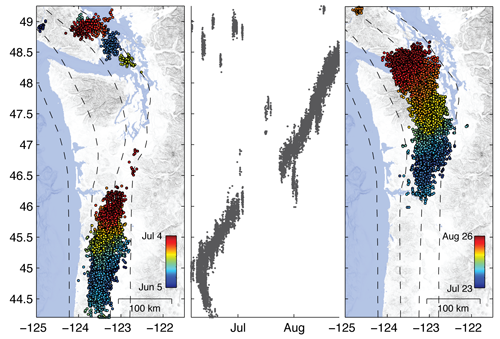Using messy seismicity to investigate earthquakes and plate boundary dynamics
By:
Aaron Wech
U.S. Geological Survey
Join us for coffee beginning at 10:00 a.m.
Click for a Live Broadcast.

Abstract
Tectonic tremor, a messy seismic signal characterized by enduring 1-10 Hz signals, is observed beneath the locked zone of many faults. In subduction zones, it is often accompanied by slow slip, an intermediate mechanism for accommodating plate motion between a megathrust rupture and stable sliding.
While it is evident these phenomena play a critical role in relieving stress on the plate interface, the nature of these signals makes tracking them difficult, however, and a clear understanding of the processes controlling their behavior remains elusive. Here I'll try and make the case that tracking this behavior is both interesting and important by presenting an overview of we do and don't know, how it relates to hazards, and what it means for the physics of earthquakes and plate boundary dynamics.




